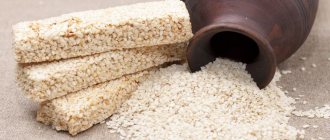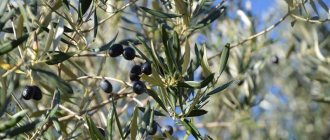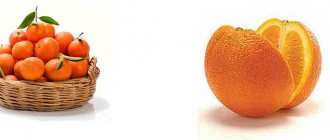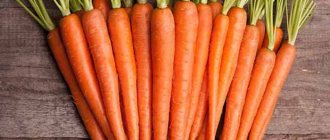Cucumbers easily fit into any diet, and also provide the body with useful elements and protect against cancer. Find out the calorie content of fresh, salted, pickled and lightly salted cucumbers and do not deny yourself the pleasure!
Author: Kristina Lobanovskaya, doctor, practicing nutritionist Article updated: 11/10/2020
Ask a Question
Cucumbers occupy an important place not only in our diet. They are used in cosmetology, in the preparation of drinks, and also as a remedy.
Benefits of cucumbers
It is immediately worth noting that greenhouse cucumbers are inferior in the amount of vitamins to ground cucumbers. It is advisable to consume from 10 am to 6 pm - this is the most optimal time for digestion and absorption.
Vegetables promote better absorption of proteins and fats, lower blood pressure, cleanse joints, remove toxins and waste, cleanse intestinal microflora, and increase the acidity of gastric secretion. For people with vascular diseases, they help in removing water and salts. It has long been noted that cucumber has a diuretic and laxative effect, so it is useful to use the product for constipation and intestinal atony.
Cucumber juice with honey is used to relieve expectoration and soothe cough. In cosmetology they are used to clean and tighten enlarged pores. With systematic use of the gruel or juice, the skin becomes whiter, acquires elasticity, oily shine disappears, elasticity and the appearance of fewer wrinkles are noted.
Cucumbers neutralize acidic compounds that are found in our food and disrupt metabolic processes. Gives a feeling of fullness due to the presence of a large amount of fiber and slows down the process of processing carbohydrates into fats.
When salted and pickled, they promote increased secretion of gastric juice.
Cucumber - composition and beneficial properties
It is interesting that people consume green vegetables in their unripe form. A special feature of its composition is the large amount of water. Its structure is similar to that which can be obtained by distillation followed by freezing. The liquid hidden in the cucumber pulp helps remove various toxic substances and heavy metal salts from the human body.
In terms of the amount of vitamins, greens contain the most ascorbic and pantothenic acid, as well as phylloquinone. The latter belongs to the fat-soluble vitamins of group K, which is involved in the mineralization of bone tissue and is present in blood serum, promoting blood clotting. The herbaceous plant is rich in B vitamins. The presence of folic acid in the fruit helps keep blood sugar levels under control.
Among the micro- and macroelements in greens, there is a predominance of potassium, calcium, magnesium, copper, cobalt, manganese and iron.
The amount of useful elements in the body returns to normal after eating fresh cucumbers. Folates in the plant block the formation of cholesterol plaques in blood vessels. The presence of insoluble coarse fibers is beneficial for the intestines, the functioning of which is quickly normalized when cucumbers are included in the menu.
For older people, those who suffer from diabetes, and those who are overweight, cucumbers are indispensable in the diet. They help restore impaired metabolic processes. The vegetable is useful for women during pregnancy. After all, its ability to remove excess fluid from the body and helps reduce the formation of edema. Also, cucumbers will saturate the expectant mother with useful vitamins, nutrients, and improve the functioning of the digestive tract.
A fasting day once a week, when the entire menu consists of vegetables, will be useful for those who have problems with the cardiovascular system. Cucumbers will save you from constipation, intestinal atony, and uric acid diathesis. Fresh vegetable juice helps with catarrh of the upper respiratory tract, cough, and stomach pain. Cucumber pulp is beneficial for the skin, restoring its structure, moisturizing and rejuvenating it. You need to know about the benefits of a vegetable in order to consider including the product in your food.
Energy value
Cucumbers are 95% water.
They contain a high percentage of nicotinic (takes part in tissue respiration, restores intestinal motility, improves blood circulation, helps the liver fight toxins) and pantothenic (strengthens the regeneration process, regulates water and protein metabolism) acids. Phosphorus, magnesium, potassium, and calcium are present in small quantities. They are a good source of iodine.
Of the microelements identified in their composition, iron, iodine, fluorine, manganese, zinc, and molybdenum were identified. The content of steroidal saponins, which influence the bitter taste of the product, has been proven. They are also able to suppress pathological tissue growth. In recent years, a method of using steroid saponins against the development of cancer has been actively developed.
Calorie content of fresh cucumbers
Fresh cucumbers fit perfectly into a weight loss diet; the product is also ideal for a fasting day, as it perfectly satisfies hunger and is low in calories.

Calorie content of fresh cucumbers: 15 kcal/100 g.
Nutritional value per 100 g:
- proteins: 0.6 g;
- fats: 0.2 g;
- carbohydrates: 3.7 g.
Calorie content of fresh cucumbers without peel: 12 kcal/100 g.
Nutritional value per 100 g:
- proteins: 0.6 g;
- fats: 0.2 g;
- carbohydrates: 2.2 g.
Salads with cucumbers and their calorie content
Fresh cabbage and cucumber salad calories
125 calories
Proteins – 1.5 grams
Fat – 11.5 grams
Carbohydrates – 3.8 grams
Calorie content of cucumber and tomato salad dressed with vegetable oil
89 calories
Proteins – 0.8 grams
Fats – 8 grams
Carbohydrates 4.1 grams
Calorie content of cucumber and tomato salad dressed with mayonnaise
56.3 calories
Proteins – 0.9 grams
Fat – 4.3 grams
Carbohydrates – 3.8 grams
Calorie content of cucumber and tomato salad dressed with sour cream 20%
29.7 calories
Proteins - 1 gram
Fat – 1.1 grams
Carbohydrates – 4.2 grams
Solyonykh
During the pickling process, vegetables produce acid, which improves the functioning of the digestive system, lowers blood pressure, cleanses and removes fats from the circulatory system. Pickles contain a large amount of fiber, beneficial bacteria that prevent the proliferation of harmful microbes.
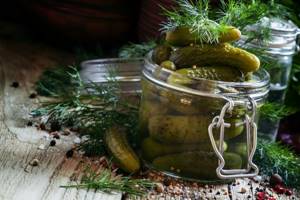
Calorie content of pickled cucumbers: 11 kcal/100 g.
Nutritional value per 100 g:
- proteins: 0.3 g;
- fats: 0.2 g;
- carbohydrates: 2.6 g.
Pickled
The pickled product improves appetite and facilitates the digestion process. Pickled cucumbers have a mild laxative property, but they retain a small part of the beneficial microelements.
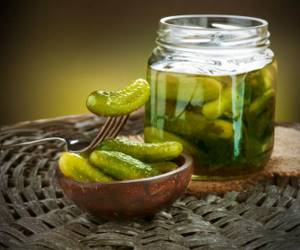
Calorie content of pickled cucumbers: 16 kcal/100 g.
Nutritional value of 100 g:
- proteins: 0.4 g;
- fats: 0.2 g;
- carbohydrates: 2.5 g.
Lightly salted
Lightly salted cucumbers are characterized by a high content of calcium, iron, manganese, vitamin A, etc. In addition to the dietary value of the vegetables themselves, the brine is also useful. It is rich in magnesium and potassium salts, helps with gastrointestinal disorders, congestion and hangovers.
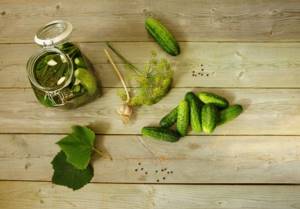
Calorie content of lightly salted cucumbers: 12 kcal/100 g.
Nutritional value per 100 g:
- proteins: 0.6 g;
- fats: 0.2 g;
- carbohydrates: 2.6 g.
Dietary properties:
How many calories are in fresh cucumbers, what dietary properties they have, all this is very interesting for those who are trying to lead a healthy lifestyle, monitor their health and figure. So we will try to answer these questions in the next article.
So here it is:

Cucumber is such a familiar vegetable to all of us, so familiar that we no longer even think about how it is useful. And in vain: it pleases us not only with its taste, it is an excellent product for those who want to get rid of extra pounds.
Cucumbers contain a lot of vitamins: C, B1, B2, P, A, as well as enzymes and mineral components.
Fresh cucumber and tomato salad
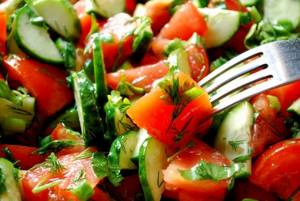
Recipe:
- ground cucumbers: 313 g – 46.95 kcal;
- ground tomatoes: 349 g – 69.8;
- green onions: 37 g – 7.03;
- dill: 26 g – 9.88;
- olive oil: 30 g – 269.4.
The calorie content of this salad is 406.06 kcal. Per 100 grams of product – 53.39.
Cabbage, cucumber and tomato salad
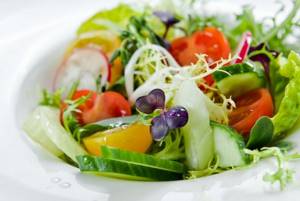
You can add cabbage to the low-calorie recipe indicated above: Chinese cabbage (16 kcal/100 g), white cabbage (27/100 g), sea cabbage (49/100 g), cauliflower (30/100 g).
Salad, with the addition of any type of cabbage, except sea cabbage, remains low-calorie. Cabbage can be included in the diet for those who want to lose weight. It not only contains a small amount of calories, it has the property of burning fat, eliminates constipation, and removes toxins and waste.
Harmful properties of cucumbers
Cucumbers can increase the secretion of gastric juice. Therefore, they cannot be included in the diet for peptic ulcers of the stomach and duodenum, gastritis with high acidity and reflux esophagitis. Nursing mothers should remember that fresh cucumbers have a laxative effect. If a child has a tendency to constipation, then including this vegetable in the mother’s diet is justified. In other cases, it is better for nursing mothers to avoid eating cucumbers.
Video from YouTube on the topic of the article:
Contraindications
As we found out, cucumber should have a place on every dinner table. Overeating causes bloating and diarrhea. The consumption of these vegetables has its limitations, including exclusion from the diet. Fresh cucumbers should not be consumed if:
- stomach ulcer;
- duodenal ulcer;
- acute and chronic enteritis, gastritis, enterocolitis, colitis.
Salted and pickled foods are prohibited from being consumed when:
- acute hepatitis and cholecystitis;
- inflammatory processes of the stomach and intestines.
It is not advisable to eat both fresh and salted (pickled) when:
- hypertension;
- atherosclerosis;
- acute and chronic nephritis;
- chronic renal failure;
- urolithiasis.
Each disease has different stages of development; consult your doctor before using the product.
Product preparation and storage methods
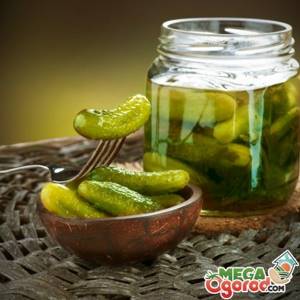
Due to the fact that cucumbers can be preserved in different ways, the vegetable is consumed in salted and pickled form until the next harvest.
- Cucumbers are prepared for the winter by adding dill, horseradish leaves, a head of garlic, blackcurrant, cherry, and oak leaves to jars. Many housewives pour the greens placed in jars three times with hot brine. And others use cold water, and their cucumbers do not spoil under a plastic cover.
- Pickled cucumbers soaked in tomato juice, marinated with carrots, onions and mint leaves are well preserved. There are many cooking recipes, and each housewife has her own special way of preparing vegetables for the winter.
- Storing fresh fruits involves placing them in cold water, coating the skin with egg white, and keeping them in an open plastic bag placed in the refrigerator. These methods will allow you to enjoy the fresh product for a week or two. During storage, it is necessary to frequently inspect the fruits, removing those that begin to rot or deteriorate.
In any form, cucumbers will be a favorite treat for the whole family during the long winter.
More information can be found in the video:
What should you pay attention to when purchasing?
- When choosing, pay attention to the appearance: the color of fresh ones is brighter than stale ones. If yellow spots are visible on them, most likely they will be bitter.
- The tail should be elastic; the more flaccid the tail, the less fresh the product.
- Do not choose cucumbers that are too large; they contain a lot of seeds. Gherkins (5-9 cm) are considered the most delicious for salads and pickling.
- They are often washed before selling, but without a protective layer they will quickly wither. It is better to give preference to vegetables on which soil remains are visible.
- Cucumbers with black pimples are more suitable for canning, and those with white pimples are more suitable for pickling. For fresh consumption, their color is not important.
Rules for choosing a cucumber
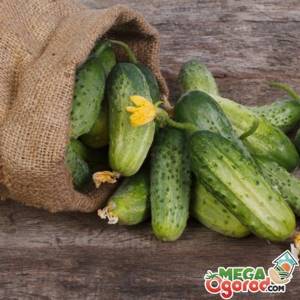
If the plant is grown on the site, then it is collected every day at the same time - in the evening or in the morning. If you skip the procedure, you need to understand that after two days there will be a lot of overgrown fruits in the garden, which prevent new cucumbers from appearing.
When purchasing a vegetable, you must choose firm, bright green fruits that do not have yellow or brown spots.
The size of greens can reach ten centimeters or more. These fruits are good for canning. Longer specimens are used in salads. There is no need to choose fruits that look like a hook or a ball.
If you want to keep greens fresh, then you should not wash them after purchasing. The natural coating will prevent the product from fading. A properly selected vegetable can be kept fresh for several weeks.
